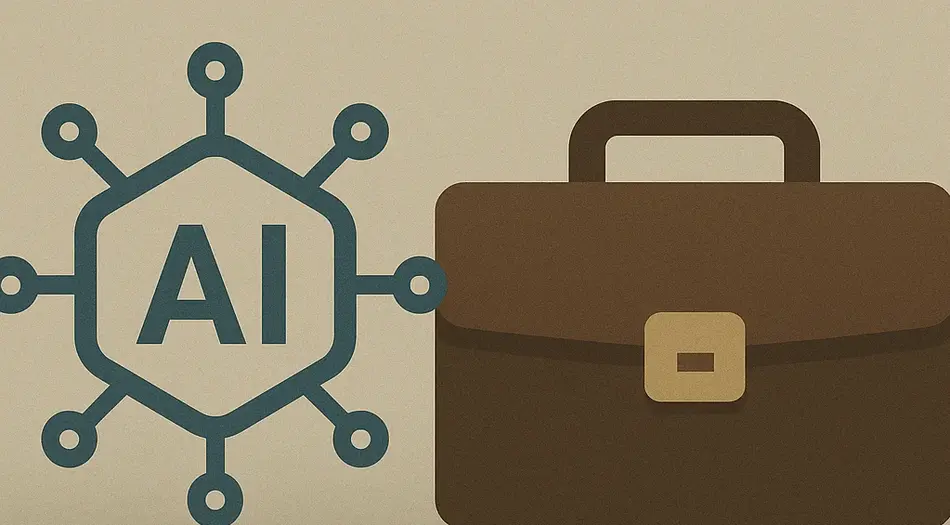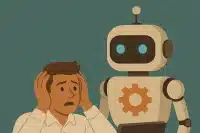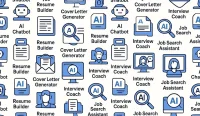Artificial intelligence is transforming U.S. workplaces at breakneck speed—but contrary to public fears, it has not yet sparked mass layoffs. According to the New York Federal Reserve’s September survey, nearly 40% of service firms and 26% of manufacturers have adopted AI tools in the past year. Instead of replacing entire job categories, most companies are retraining workers to adapt, creating a more augmented workforce rather than a jobless one.
The report provides a nuanced view: AI is everywhere, but its impact is uneven—improving productivity in some sectors while sowing uncertainty in others.
AI Adoption at a Glance
- Services sector: 40% of firms now deploy AI, mostly in customer service, data analysis, and marketing.
- Manufacturing: 26% have integrated AI, especially in quality control and predictive maintenance.
- Retail & Logistics: Rapid AI adoption in inventory management, supply chain forecasting, and checkout automation.
- Finance: Widespread use in fraud detection, loan approvals, and algorithmic trading.
Rather than large-scale job cuts, AI is reshaping tasks within jobs, forcing workers to learn new tools and blend machine efficiency with human judgment.
Why Mass Layoffs Haven’t Happened—Yet
- Complement, Not Replace: Most firms use AI to eliminate repetitive tasks rather than entire roles.
- Worker Retraining: Employers are retraining staff to use AI tools, recognizing institutional knowledge remains invaluable.
- Labor Shortages: With job openings still above 7 million, many firms prefer to redeploy workers rather than let them go.
- Economic Caution: Companies are hesitant to over-rely on AI until regulations and long-term ROI become clearer.
AI Isn’t Replacing Jobs—It’s Redefining Them
Stay ahead of change by finding workers ready to adapt and grow with AI tools.
Post a Job Now →The Uneven Impacts
- Winners: Highly skilled workers who master AI tools are commanding higher wages and faster promotions.
- Losers: Entry-level white-collar roles—like analysts, junior coders, and customer support—are shrinking.
- Middle Ground: Sectors like healthcare and education are adopting AI cautiously, focusing on augmentation rather than replacement.
Risks Ahead
While the NY Fed downplays immediate job destruction, the report warns of future risks:
- Hiring Freezes: Some firms are postponing new hires, expecting AI to fill future gaps.
- Skill Gaps: Workers without digital literacy may be sidelined.
- Regulatory Lag: Bias, data privacy, and compliance issues could derail adoption or trigger backlashes.
FAQs
Q1: Has AI caused widespread U.S. job losses?
No. While it has reshaped certain roles, most firms are retraining employees instead of cutting them.
Q2: Which sectors are most affected?
Services and manufacturing show the biggest AI integration, while healthcare and education remain slower adopters.
Q3: Why are companies cautious about layoffs?
Because labor shortages persist, retraining is cheaper than rehiring, and public backlash to “AI layoffs” could hurt reputations.
Q4: What’s next?
Expect hiring freezes and skill-based filtering to intensify as AI becomes more advanced and regulations catch up.
Case Study: AI at JPMorgan Chase
JPMorgan Chase, one of the world’s largest banks, has integrated AI systems into fraud detection and credit assessments. Instead of eliminating roles in risk management, the company retrained analysts to interpret AI outputs and flag anomalies AI missed.
The result:
- Fraud detection accuracy rose by 20%.
- No mass layoffs occurred, but entry-level hiring slowed.
- Analysts reported spending more time on “higher-value” investigative work.
This illustrates the dual reality of AI: fewer entry-level opportunities, but enhanced productivity and specialization for those who stay.




